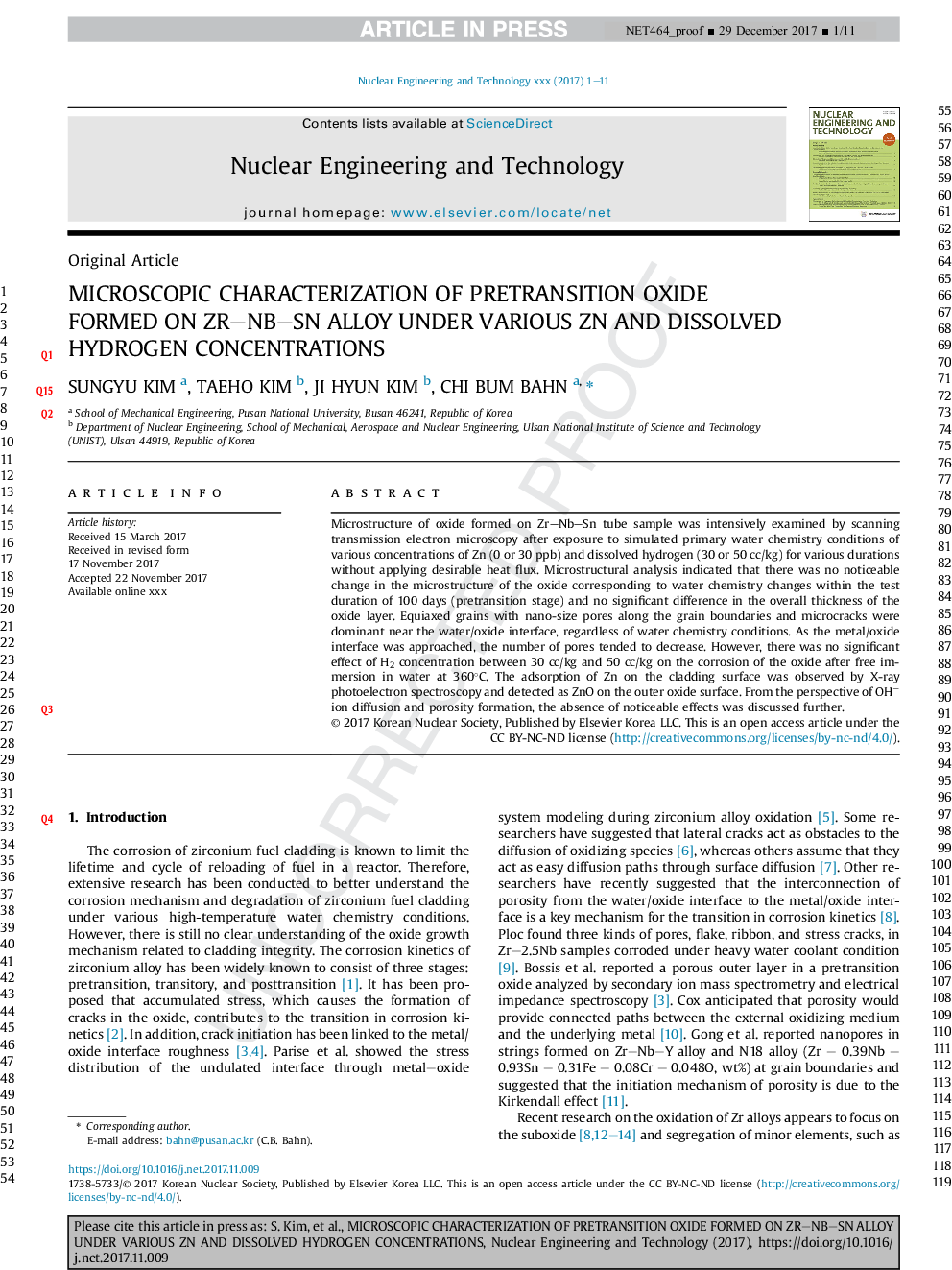| Article ID | Journal | Published Year | Pages | File Type |
|---|---|---|---|---|
| 8083780 | Nuclear Engineering and Technology | 2018 | 11 Pages |
Abstract
Microstructure of oxide formed on Zr-Nb-Sn tube sample was intensively examined by scanning transmission electron microscopy after exposure to simulated primary water chemistry conditions of various concentrations of Zn (0 or 30 ppb) and dissolved hydrogen (H2) (30 or 50 cc/kg) for various durations without applying desirable heat flux. Microstructural analysis indicated that there was no noticeable change in the microstructure of the oxide corresponding to water chemistry changes within the test duration of 100 days (pretransition stage) and no significant difference in the overall thickness of the oxide layer. Equiaxed grains with nano-size pores along the grain boundaries and microcracks were dominant near the water/oxide interface, regardless of water chemistry conditions. As the metal/oxide interface was approached, the number of pores tended to decrease. However, there was no significant effect of H2 concentration between 30 cc/kg and 50 cc/kg on the corrosion of the oxide after free immersion in water at 360°C. The adsorption of Zn on the cladding surface was observed by X-ray photoelectron spectroscopy and detected as ZnO on the outer oxide surface. From the perspective of OHâ ion diffusion and porosity formation, the absence of noticeable effects was discussed further.
Related Topics
Physical Sciences and Engineering
Energy
Nuclear Energy and Engineering
Authors
Sungyu Kim, Taeho Kim, Ji Hyun Kim, Chi Bum Bahn,
